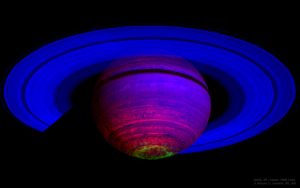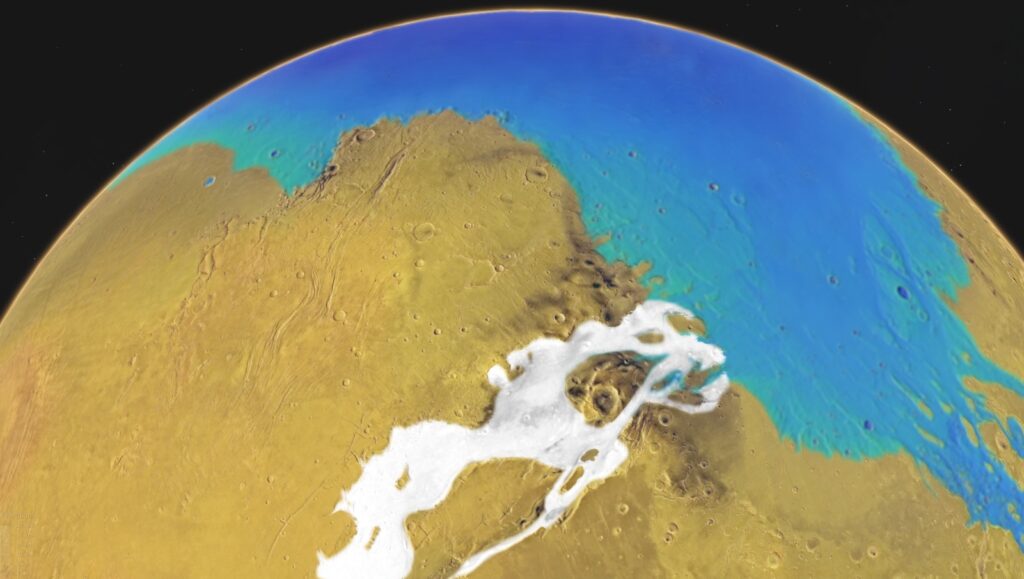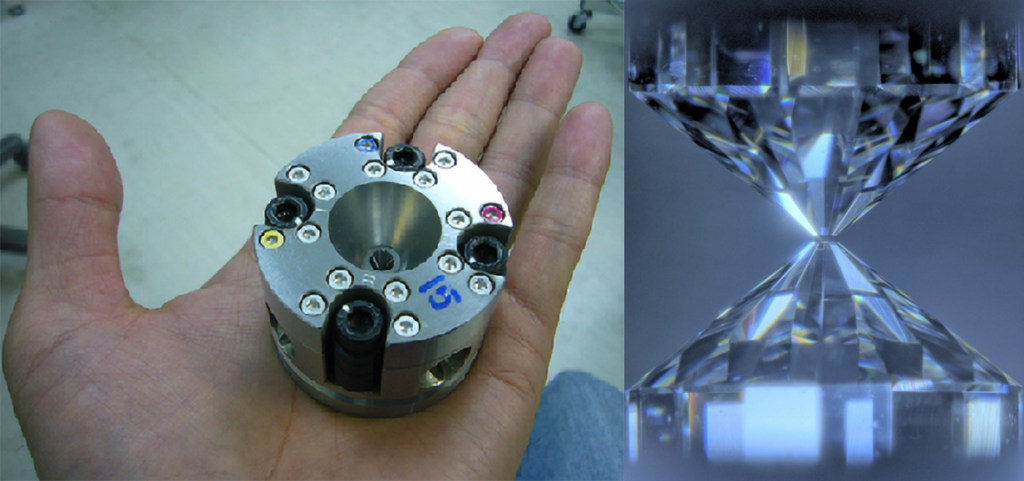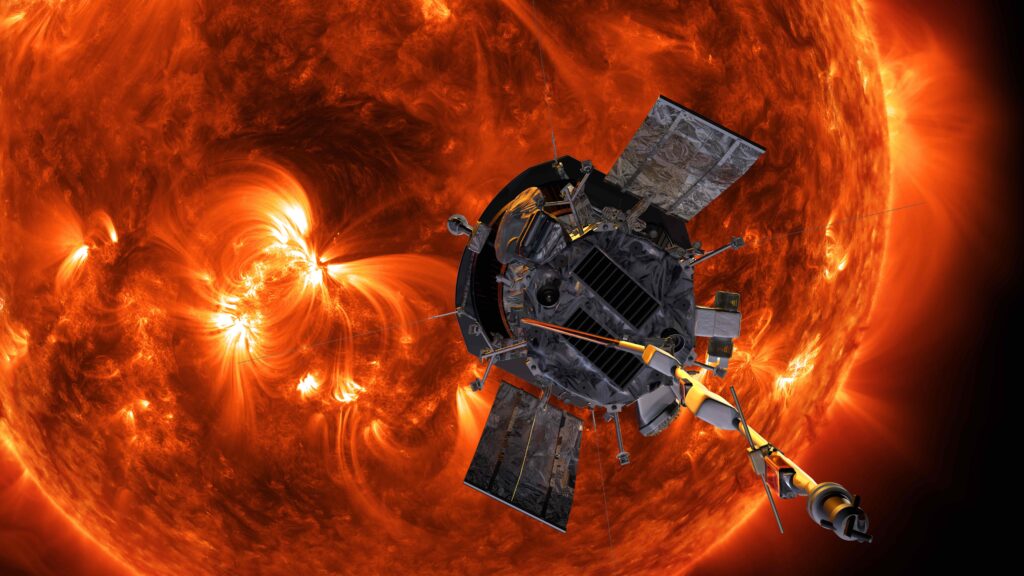A NASA-funded simulation of early Mars revealed that the climate three billion years ago on the red planet was very similar to Earth now, with a stable ocean in the northern hemisphere. This new timeline would have given life another 500 million years to develop. Plus, a dwarf galaxy, Saturn’s aurorae, a Soyuz launch, and an interview with Dr. Adam Szabo, mission scientist for the Parker Solar Probe.
Podcast
Show Notes
Dwarf galaxy shown off in new Hubble Image
- NASA Goddard image release
Saturn’s winds generate aurora
- Keck Observatory press release
- “Saturn’s Weather-Driven Aurorae Modulate Oscillations in the Magnetic Field and Radio Emissions,” M. N. Chowdhury et al., 2021 December 28, Geophysical Research Letters
Soyuz rocket launches classified satellite
- Roscosmos press release (Russian)
SpaceX building Starlink station in Tonga
- SpaceX engineers in Fiji for six months (FBC News)
Mars may have been habitable longer than thought
- NASA press release
- “Circumpolar ocean stability on Mars 3 Gy ago,” Frédéric Schmidt et al., 2022 January 25, PNAS
Just how did Mars lose all that water?
- The University of Tokyo press release
- “Stratification in planetary cores by liquid immiscibility in Fe-S-H,” Shunpei Yokoo et al., 2022 February 3, Nature Communications
Record-setting Parker Solar Probe approaches Sun again
- NASA press release
Transcript
Hello and welcome to the Daily Space. I am your host Dr. Pamela Gay.
And I am your host Beth Johnson.
And we’re here to put science in your brain.
It turns out, a lot of science starts with stunning images, including images of wind-triggered aurorae on Saturn that solve scientific big problems, a dwarf galaxy that is just pretty, and So. Much. Mars. News.
Plus, we’ll be joined by our guest, Dr. Adam Szabo, the Mission Scientist for the Parker Solar Probe, as we take a look at this record-setting spacecraft and its plans for the future.

One of the really pleasing things about astronomy is how pretty the data can be. A lot of times, a research project will start out with a person or a team taking the newest, highest resolution, longest exposure image of something that is thought to be scientifically interesting. Almost immediately, you can tell, “This is going to be gorgeous”, and you spend a few days or weeks, depending on the complexity of your setup, getting the best possible version of that image put together. And then you spend a few more months or years trying to understand what the heck the image means, but at least when you’re asked, “Whatcha doing?”, you can say, “I took this pretty picture!”
And, right now, if you ask the researchers behind a new, stunning image of the dwarf irregular galaxy NGC 1705 what they are doing, they will say, “Analyzing this pretty picture!”
This system is 17 million light-years away, which is roughly seven times farther than the Andromeda Galaxy. The system is rich in young, hot stars that pierce their surroundings with ultraviolet light. This data picks up the red nebulosity of surrounding hydrogen gas glowing red under the ultraviolet light.
According to the release that accompanied this image: …astronomers aimed to discover thousands of emission nebulae – regions created when hot, young stars bathe the clouds of gas surrounding them in ultraviolet light, causing them to glow.
Until that research comes out, we have this pretty picture to hold us over.
Somedays, it is alright to just look at the pretty pictures, so we are now going to leap from pretty galaxies to a pretty new view of Saturn.

The image that we’re showing is built up from infrared data acquired by the Keck telescope in Hawai’i, and it shows how Saturn’s south pole can be ringed with strong aurorae. Using a month of data, researchers were able to map circulation patterns in Saturn’s atmosphere that reveal the aurorae are driven by atmospheric winds and generate radio emission pulses that have made the measurement of Saturn’s rotation rate harder than it should have been. The radio pulses actually make Saturn look like it rotates with a variable-length day, but it doesn’t. It just has variable winds that generate changing aurora.
This kind of aurora is very different from what we have on Earth but actually matches early explanations for Earth’s aurorae. According to study coauthor Tom Stallard: This search for a new type of aurora harks back to some of the earliest theories about Earth’s aurora. We now know that aurorae on Earth are powered by interactions with the stream of charged particles driven from the Sun. But I love that the name Aurora Borealis originates from the ‘the Dawn of the Northern Wind.’ These observations have revealed that Saturn has a true Aurora Borealis – the first-ever aurora driven by the winds in the atmosphere of a planet.
This work appears in Geophysical Research Letters and with first author Nahid Chowdhury.
Not everything space-related is composed of pretty pictures of objects in space. Sometimes we also have pretty images of things going into space. We now go to Erik Madaus for news on a recent launch and how Starlink is trying to do good with their tech.

On February 5 at 0700 UTC, a Soyuz 2.1a/Fregat launched the Kosmos 2553 satellite from the Plesetsk Cosmodrome in northern Russia.
Kosmos 2553 is a classified satellite for the Russian Ministry of Defense, but they still mentioned a little about its mission. People following the Russian space industry through public sources think this satellite is the first of a new type of radar satellite called Neitron. According to the Russians, it is “equipped with newly developed onboard instruments and systems for testing under the influence of radiation and heavy charged particles.”
This mission makes sense given what orbit it was tracked in. According to the U.S. military, it was inserted into a circular 2,000-kilometer orbit inclined 67 degrees to the equator, which happens to be right in the lower Van Allen radiation belt. The Fregat upper stage was deorbited safely into the ocean on its second orbit.
During our in-depth segment on the eruption of the Hunga-Tonga Hunga-Ha’apai volcano, we mentioned that Starlink is harming the night sky for research astronomy, but it may be worth it if it’s usable in an emergency such as the Tonga eruption. That now seems to have happened.

In an article Fiji Broadcasting Corporation News posted last week, SpaceX engineers are in the country, setting up a ground station for Starlink, according to the minister of communications for Tonga. The ground station will be set up for six months until the current undersea cable is repaired.
This is a nice gesture, but with only one ground station, the total bandwidth available is limited. Still, as the Starlink constellation is currently set up, the satellites can only send signals when both the customer and a ground station are both in sight, so it’s better than nothing. The inter-satellite links are not operational, and even then the satellites with the links are a small fraction of the total constellation and in specific orbital planes.
And now we move away from interesting pictures and Earth matters to look at water on Mars again.
When we think of Mars, we think of a red planet, barren, covered in dust and rocks and ancient lava flows. There’s an ongoing debate about the existence of liquid water under the polar ice caps. We’ve tracked seasonal changes with a host of satellites. And we have a small collection of rovers wandering the surface, sampling, analyzing, and collecting rocks. There are sedimentary rocks that were clearly created due to the flow of water. We’ve seen pictures of stream channels and river deltas, and Perseverance landed in what we think was an ancient crater lake bed.
And yet, no life. Granted, Percy is the first rover really tasked with looking for signs of life*, and even it’s not allowed to sample where we think life could still be if it were there. We seem, on the whole, to be hopeful that we’ll find evidence of life or past life because of that wet history of Mars, even if most of the water is gone, whether it has escaped the thin atmosphere or gone underground.

Now, in a new paper published in the Proceedings of the National Academy of Sciences, a NASA-funded simulation of past Mars has revealed that the red planet was wetter for longer than previously thoughts – about 500 million years longer. The research into Mars’ past conditions is not an easy task, as co-author Michael Way explains: Discerning the climate of Mars approximately three billion years ago is challenging because the Martian surface features do not seem to fully support either a warm and wet or cold and dry climate during that time. A warm and wet climate would have produced extensive erosion from flowing water, but few valley networks have been observed from this age. A too-cold climate would have kept any northern ocean frozen most of the time. A moderate cold climate would have transferred the water from the ocean to the land in the form of snow and ice. But this would prevent tsunami formation, for which there is some evidence.
This new simulation found not only a cold and wet Mars was possible, but there might have even been a stable ocean in the northern hemisphere where the atmosphere was dense and warm. That would make it possible for the water to evaporate but then fall back to the surface as rain or snow. In nearby highland regions, the snow could accumulate enough to become glaciers, and those glaciers would flow back down to rejoin the ocean.
And that northern ocean means a mechanism for circulating warmer water to the north pole, raising temperatures there as well.
Factor in the evidence that Mars’ atmosphere was thicker in the past, and you can now keep Mars warm for a longer period of time than previously thought. A warmer, wetter planet for an extra 500 million years gives you that much more time and the right conditions for life to develop.
The evidence is piling up for a habitable past Mars, and I’m excited to contemplate what future rock samples might find.

Of course, knowing that Mars had water isn’t a new thing. As mentioned in the previous story, we’ve seen evidence of river beds, stream flows, and lakes. The water was there, and now it’s not. That’s definitely not a question. The question is what made the water disappear?
It turns out that early in Mars’ history when there was a northern ocean and precipitation and wetter conditions, there was also a magnetic field similar to what we have here on Earth. That magnetic field helped protect Mars’ atmosphere, which kept the water on the surface. Then the magnetic field disappeared, and in new research published in Nature Communications, a team has possibly solved just why that magnetic field went away.
Co-author Kei Hirose explains the logic behind these recent simulations: Earth’s magnetic field is driven by inconceivably huge convection currents of molten metals in its core. Magnetic fields on other planets are thought to work the same way. Though the internal composition of Mars is not yet known, evidence from meteorites suggests it is molten iron enriched with sulfur. Furthermore, seismic readings from NASA’s InSight probe on the surface tell us Mars’ core is larger and less dense than previously thought. These things imply the presence of additional lighter elements such as hydrogen. With this detail, we prepare iron alloys that we expect constitute the core and subject them to experiments.
And once again, we see scientists getting to play with diamonds and lasers. They created a sample of material containing iron, sulfur, and hydrogen. These are the elements they think Mars’ core used to be made from. They then placed the sample between two diamonds, compressed it, and hit it with an infrared laser. Observations were taken with X-ray and electron beams, and the team was able to see what happened as the sample melted under pressure and how the composition changed over time.
Basically, the material separated into two liquids, which would have given Mars the convection currents necessary to make a magnetic field. Eventually, however, the two liquids completely separated, the currents went away, and with those, the magnetic field disappeared. Without the magnetic field, the atmosphere got blown out to space by the solar winds, and the water vapor in the air broke down and escaped, followed by the surface water as it evaporated over time.
So life could have developed, but it likely only had a narrow window to do so, even if that window is slightly longer than we originally thought.
Speaking of the solar wind, we’ll be joined in a few moments by Dr. Adam Szabo to talk about the Parker Solar Probe and what we are learning about that solar wind.
*This statement is incorrect. Per NASA’s page on the Viking 1 and 2 missions: Besides taking photographs and collecting other science data on the Martian surface, the two landers conducted three biology experiments designed to look for possible signs of life. These experiments discovered unexpected and enigmatic chemical activity in the Martian soil, but provided no clear evidence for the presence of living microorganisms in soil near the landing sites. According to scientists, Mars is self-sterilizing. They believe the combination of solar ultraviolet radiation that saturates the surface, the extreme dryness of the soil and the oxidizing nature of the soil chemistry prevent the formation of living organisms in the Martian soil.
Interview

The Parker Solar Probe continues to wow scientists and the public alike with its record-breaking speeds and approaches to the Sun. And now, it’s set to reach perihelion again this month on February 25. The main mission objectives for the spacecraft are to “unlock the mysteries” of the Sun’s corona, and it will do so by tracing how the flow of energy heats and accelerates the corona and solar wind, determining the structure of the magnetic fields that create the solar wind, and exploring how all those energetic particles get sped up and transported.
And this has to be a very hardy spacecraft to perform all that science. The Parker Solar Probe will eventually get within nine solar radii of what we consider to be the surface of the Sun. That’s only about three million kilometers away. At that point in time, the probe will be moving at almost 700,000 kilometers per hour, and the temperature of the solar shield on the craft will reach about 1400˚ Celsius.
It’s an amazing mission, and although this upcoming perihelion is the eleventh pass so far, there are still at least three more years of data to collect, including two more flybys of Venus and another thirteen close approaches. We’re always excited to see what new information is gleaned from Parker about the Sun.
Joining us now is Dr. Adam Szabo from NASA Goddard Space Flight Center. Dr. Szabo is the Mission Scientist for the Parker Solar Probe, and his research specializes in heliospheric and magnetospheric structures, including shocks and discontinuities.
Thank you for joining us, Dr. Szabo, and welcome.
[Transcript unavailable]
It’s been great having you here today, Dr. Szabo. Thank you again.
This has been the Daily Space.
To all of you watching, this conversation ran longer than we can air here on NowMedia. You can catch the interview in its entirety on our website, DailySpace.org.
While you’re there, check out our show notes to find more information on all our stories, including images. As always, we’re here thanks to the donations of people like you. If you like our content, please consider joining our Patreon at Patreon.com/CosmoQuestX.
Credits
Written by Pamela Gay, Beth Johnson, and Erik Madaus
Hosted by Pamela Gay, Beth Johnson, and Erik Madaus
Audio and Video Editing by Ally Pelphrey
Content Editing by Beth Johnson
Intro and Outro music by Kevin MacLeod, https://incompetech.com/music/


 We record most shows live, on Twitch. Follow us today to get alerts when we go live.
We record most shows live, on Twitch. Follow us today to get alerts when we go live.
Dear Beth Johnson: In your recent article entitled Mars May Have Been Habitable Longer Than Thought, you are incorrect when you state “Granted, Percy is the first rover really tasked with looking for signs of life, and even it’s not allowed to sample where we think life could still be if it were there.” Your error is that in 1976, NASA’s Viking I and II landed on Mars and tested for actual living organisms using a combination of metabolic on-site soil tests. The results are still controversial.
Well, look at that. You are correct! Thank you.